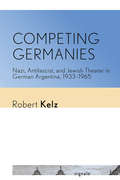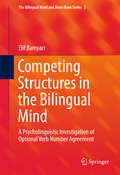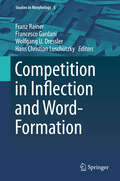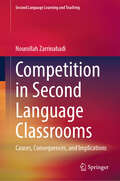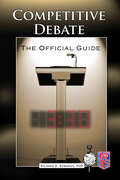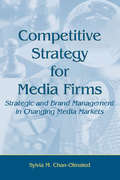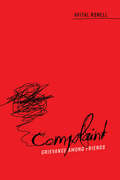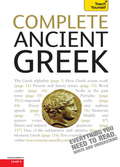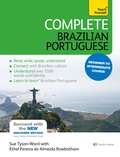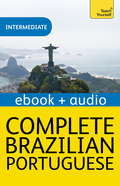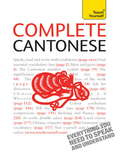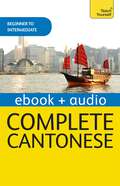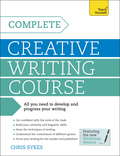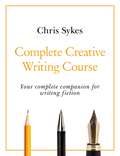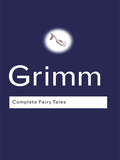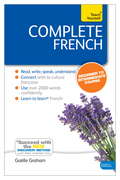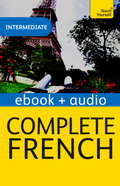- Table View
- List View
Competing Germanies: Nazi, Antifascist, and Jewish Theater in German Argentina, 1933–1965 (Signale: Modern German Letters, Cultures, and Thought)
by Robert KelzFollowing World War II, German antifascists and nationalists in Buenos Aires believed theater was crucial to their highly politicized efforts at community-building, and each population devoted considerable resources to competing against its rival onstage. Competing Germanies tracks the paths of several stage actors from European theaters to Buenos Aires and explores how two of Argentina's most influential immigrant groups, German nationalists and antifascists (Jewish and non-Jewish), clashed on the city's stages. Covered widely in German- and Spanish-language media, theatrical performances articulated strident Nazi, antifascist, and Zionist platforms. Meanwhile, as their thespian representatives grappled onstage for political leverage among emigrants and Argentines, behind the curtain, conflicts simmered within partisan institutions and among theatergoers. Publicly they projected unity, but offstage nationalist, antifascist, and Zionist populations were rife with infighting on issues of political allegiance, cultural identity and, especially, integration with their Argentine hosts.Competing Germanies reveals interchange and even mimicry between antifascist and nationalist German cultural institutions. Furthermore, performances at both theaters also fit into contemporary invocations of diasporas, including taboos and postponements of return to the native country, connections among multiple communities, and forms of longing, memory, and (dis)identification. Sharply divergent at first glance, their shared condition as cultural institutions of emigrant populations caused the antifascist Free German Stage and the nationalist German Theater to adopt parallel tactics in community-building, intercultural relationships, and dramatic performance.Its cross-cultural, polyglot blend of German, Jewish, and Latin American studies gives Competing Germanies a wide, interdisciplinary academic appeal and offers a novel intervention in Exile studies through the lens of theater, in which both victims of Nazism and its adherents remain in focus.
Competing Structures in the Bilingual Mind: A Psycholinguistic Investigation of Optional Verb Number Agreement (The Bilingual Mind and Brain Book Series #2)
by Elif BamyacıThis volume combines psycholinguistic experiments with typological investigations in order to provide a comprehensive exploration of the linguistic structure of verb-number agreement in bilingual speakers, with a particular focus on the Turkish language. It takes as its starting point the question of which linguistic structures pose difficulties for bilingual speakers, and then proceeds to evaluate the question by using the interface phenomenon of optional verb number agreement. In doing so, this volume investigates how the bilingual mind handles grammatical structures that demand high processing sources, working towards a processing-based linguistic framework for the bilingual mind. Beginning with a thorough survey of the current research of the interface phenomenon in the bilingual mind, the volume then proceeds to present two separate studies on each linguistic interface type, namely semantics-syntax interface and syntax-pragmatics interface, thus filling a number of gaps in the bilingualism research with regards to the interface phenomenon The results and conclusions of these studies are then integrated with current knowledge and research from the field within a theoretical and processing-based framework in order to explore new psycholinguistic insights for the bilingual mind, specifically the conclusion that the grammar of bilingual speakers is shaped according to cross linguistic tendencies. Ultimately, it provides a unified account and a comprehensive conclu sion regarding the non-native-like patterns in grammar of bilingual speakers. Serving as a fascinating and timely resource, Competing Structures in the Bilingual Mind: An Investigation of Optional Verb Number Agreement will appeal to bilingualism researchers, clinical linguists, cognitive scientists, experimental linguists, and any linguist specializing in Turkic or Altaic languages.
Competition in Inflection and Word-Formation (Studies in Morphology #5)
by Franz Rainer Francesco Gardani Wolfgang U. Dressler Hans Christian LuschützkyThis is the first volume specifically dedicated to competition in inflection and word-formation, a topic that has increasingly attracted attention. Semantic categories, such as concepts, classes, and feature bundles, can be expressed by more than one form or formal pattern. This departure from the ideal principle "one form – one meaning" is particularly frequent in morphology, where it has been treated under diverse headings, such as blocking, Elsewhere Condition, Pāṇini's Principle, rivalry, synonymy, doublets, overabundance, suppletion and other terms. Since these research traditions, despite the heterogeneous terminology, essentially refer to the same underlying problems, this volume unites the phenomena studied in this field of linguistic morphology under the more general heading of competition.The volume features an extensive state of the art report on the subject and 11 research papers, which represent various theoretical approaches to morphology and address a wide range of aspects of competition, including morphophonology, lexicology, diachrony, language contact, psycholinguistics, sociolinguistics and language acquisition.
Competition in Second Language Classrooms: Causes, Consequences, and Implications (Second Language Learning and Teaching)
by Nourollah ZarrinabadiThis book offers an in-depth exploration of the causes and consequences of competition among language learners, with a particular focus on understanding the intricate relationships between competitiveness, beliefs about competition, and other psychological variables pertinent to language learning, such as motivation, anxiety, and mindsets. The initial chapters provide a comprehensive review of various competition theories and the latest empirical research on competition across diverse domains, including education and the workplace. Subsequently, the book qualitatively investigates the linguistic, psychological, educational, cultural, and contextual factors that contribute to competition in English language classrooms. It also delves into the potential psychological, educational, and personal outcomes of such competition in second language (L2) learning environments. Furthermore, this monograph scrutinizes the interplay between competition-related variables and the motivational and emotional dimensions of L2 learning. In its concluding sections, the book offers practical insights for language educators, guiding them on how to effectively manage competition among students to mitigate its adverse effects while leveraging its potential to enhance language learning and development.
Competitive Debate: The Official Guide
by Richard EdwardsThe bible for debaters and their coaches. Nearly every high school and college in America has a debate club and/or a debate team. There are hundreds of competitions at the county and state level, culminating in heated national competitions. Yet, at many high schools and colleges, coaches are drawn from the history or English departments with little or no experience in the highly structured procedures of this popular discipline. And while competitive debate has been growing each year as a prime academic activity, there have been no popular handbooks to help students and coaches prepare for contests effectively and efficiently. Practical and authoritative, this guide includes not only tips and guidelines for effective preparation and delivery, but full-length, actual transcripts of successful competitions in each format. Endorsed by the two national governing bodies for competitive debate—the National Federation of State High School Associations and the National Forensic League—and priced for the budget-conscious student and high school teacher alike, Competitive Debate: The Official Guide is set to become the instructional &“bible&” for tens of thousands of present and future debaters and their coaches. Inside, Dr. Richard Edwards—award-winning debate coach, professor, former competitive debate judge, and author—leads readers through the three popular formats of competitive debate: • Policy Debate • Lincoln-Douglas Debate • Public Forum Debate
Competitive Dynamics in the Mobile Phone Industry
by Claudio GiachettiThis book explores which kind of competitive moves and countermoves have been taken by mobile phone vendors like Nokia, Samsung, Motorola and Apple, as well as emerging rivals from developing countries, to defend their competitive position over the industry life cycle, and which factors have driven these actions.
Competitive Strategy for Media Firms: Strategic and Brand Management in Changing Media Markets (Routledge Communication Series)
by Sylvia M. Chan-OlmstedCompetitive Strategy for Media Firms introduces the concepts and analytical frameworks of strategic and brand management, and illustrates how they can be adapted according to the characteristics of distinct media products. Working from the premise that all media firms must strategize in response to the continuing evolution of new media, author Sylvia M. Chan-Olmsted offers applications of common business approaches to the products and components of the electronic media industry, and provides empirical examinations of broadcast, multichannel media, enhanced television, broadband communications, and global media conglomerate markets. This insightful and timely volume provides a thorough review of current concepts and industry practices, and serves as an essential primer for the application of business models in media contexts. As a realistic and integrated approach to media industry studies, this volume has much to offer researchers, scholars, and graduate students in media economics and management, and will be an important reference for industry practitioners.
Compiling Texts in Eighteenth-Century Britain: Mediating the Scottish Enlightenment (Palgrave Studies in the Enlightenment, Romanticism and Cultures of Print)
by Rebeca Araya AcostaThis book argues that the act of compiling texts together into collections in the eighteenth century is politically and epistemologically significant. Focusing on the reception of Scottish Enlightenment ideas, and ranging across an Edinburgh print shop, an excluded religious community in the North of England, and the story worlds of novelists and poets, the study reveals compilation to be a politically resistant activity: it challenged centralizing and homogenizing tendencies within the growing British empire in the latter half of the eighteenth century and actively built counternarratives. Rebeca Araya Acosta offers a fresh view of eighteenth-century literary transaction and shows how practices of compilation in the period were more diversified and had a far greater impact on readers than their modern descendants.
Complaint: Grievance among Friends
by Avital Ronell"It is not, nor it cannot come to good. But break, my heart, for I must hold my tongue." Thus spoke Hamlet, one of the great kvetchers of literature. Every day, gripers challenge our patience and compassion. Yet Pollyannas rile us up with their grotesque contentment and unfathomable rejection of protest. Avital Ronell considers how literature and philosophy treat bellyachers, wailers, and grumps--and the complaints they lavish on the rest of us. Combining her trademark jazzy panache with a fearless range of readings, Ronell opens a dialog with readers that discusses thinkers with whom she has directly engaged. Beginning with Hamlet, and with a candid awareness of her own experiences, Ronell proceeds to show how complaining is aggravated, distracted, stifled, and transformed. She moves on to the exemplary complaints of Friedrich Nietzsche, Hannah Arendt, and Barbara Johnson and examines the complaint-riven history of deconstruction. Infused with the author's trademark wit, Complaint takes friends, colleagues, and all of us on a courageous philosophical journey.
Complementarity Between Lexis and Grammar in the System of Person: A Systemic Typological Approach (China Perspectives)
by Pin WangThis book investigates the lexico-grammatical complementarity in language in its construal of person as a semantic system. Given the vast and wide spectrum of resources for expressing distinctions in the assignment of person roles in language, this book presents person-related system networks covering a rich range of semantic features. It also studies the system of person in relation to other major semantic systems instead of regarding it as one isolated component of language parallel to gender, number, case, etc. Systemic features of person are in turn realized by lexicogrammar, whose components, lexis and grammar form a relationship of complementarity in the process of transforming human experience into meaning. Person-related meaning can be either realized by lexical means, i.e. entity, process, quality, or grammatical means, i.e. pronouns, clitics, affixes, zero forms. Besides, such meaning is also found to be realized at some indeterminate areas along the lexis-grammar continuum. A special feature of this book is that it observes the lexicalization and grammaticalization of person based on evidence from a variety of languages. Readers will be presented a comprehensive look into the meaning of person and will be encouraged to reflect on its realization in their own languages.
Complete Ancient Greek: A Comprehensive Guide to Reading and Understanding Ancient Greek, with Original Texts
by Gavin Betts Alan HenryDesigned for complete beginners, and tested for years with real learners, Complete Ancient Greek offers a bridge from the textbook to the real world, enabling you to learn the grammar, understand the vocabulary and even how to translate the writings of Socrates and Homer. Structured around authentic material, placing an emphasis on the importance of reading classical texts in the original, and introducing both a grammar perspective and a full introduction to essential vocabulary, this course also features: -25 learning units plus maps and verb guide-Authentic materials - language taught through key texts-Teaches the key skills - reading and understanding Ancient Greek grammar and vocabulary-Culture insights - learn about the culture and beliefs of the Ancient Greeks-Self tests and learning activities - see and track your own progress.Featuring additional exercises in this new edition, this is a genuinely comprehensive yet accessible introduction to Ancient Greek. Rely on Teach Yourself, trusted by language learners for over 75 years.
Complete Ancient Greek: A Comprehensive Guide to Reading and Understanding Ancient Greek, with Original Texts
by Gavin Betts Alan HenryDo you want to be able to read ancient Greek with confidence? Find all the essential tools in this best-selling course from Teach Yourself - the No. 1 brand in language learning. The grammar of ancient Greek is explained systematically and carefully, and graded readings from Homer, Aesop, Herodotus, Thucydides and others bring it to life and give a context to the vocabulary. Extra material is provided online at www.teachyourself.com/ancientgreek to enhance your learning experience.Learn effortlessly with a new easy-to-read page design and interactive features: NOT GOT MUCH TIME?One, five and ten-minute introductions to key principles to get you started.AUTHOR INSIGHTSLots of instant help with common problems and quick tips for success, based on the authors' many years of experience.GRAMMAR TIPSEasy-to-follow building blocks to give you a clear understanding.USEFUL VOCABULARYEasy to find and learn, to build a solid foundation for understanding.TEST YOURSELFTests in the book and online to keep track of your progress.EXTEND YOUR KNOWLEDGEExtra online articles at: www.teachyourself.com to give you a richer understanding of the culture and history of ancient Greece.
Complete Brazilian Portuguese Beginner to Intermediate Course: Enhanced Edition
by Sue Tyson-Ward Ethel Pereira Rowbotham E Pereira RowbothamDo you want to develop a solid understanding of Brazilian Portuguese and communicate confidently with others?Through authentic conversations, vocabulary building, grammar explanations and extensive practice and review, Complete Brazilian Portuguese will equip you with the skills you need to use Brazilian Portuguese in a variety of settings and situations, developing your cultural awareness along the way.What will I achieve by the end of the course?By the end of Complete Brazilian Portuguese you will have a solid intermediate-level grounding in the four key skills - reading, writing, speaking and listening - and be able to communicate with confidence and accuracy. Is this course for me?If you want to move confidently from beginner to intermediate level, this is the course for you. It's perfect for the self-study learner, with a one-to-one tutor, or for the beginner classroom. It can also be used as a refresher course. What do I get?-18 learning units plus verbs reference and word glossary and revision section-Discovery Method - figure out rules and patterns to make the language stick -Teaches the key skills - reading, writing, listening, and speaking -Learn to learn - tips and skills on how to be a better language learner -Culture notes - learn about the people and places of Brazil-Outcomes-based learning - focus your studies with clear aims -Authentic listening activities - everyday conversations give you a flavor of real spoken Brazilian Portuguese-Test Yourself - see and track your own progress *Complete Brazilian Portuguese maps from Novice Low to Advanced Low level proficiency of ACTFL (American Council on the Teaching of Foreign Languages) and from A1 Beginner to B1/B2 Upper Intermediate level of the CEFR (Common European Framework of Reference for Languages) guidelines. What else can I use to learn Brazilian Portuguese?If you require an absolute Beginner course, you can try our Get Started in Brazilian Portuguese Absolute Beginner course: 9781444198539The audio for this course can be downloaded from the Teach Yourself Library app or streamed at library.teachyourself.com.Rely on Teach Yourself, trusted by language learners for over 75 years.
Complete Brazilian Portuguese Beginner to Intermediate Course: Enhanced edition
by Sue Tyson-Ward Ethel Pereira RowbothamDo you want to develop a solid understanding of Brazilian Portuguese and communicate confidently with others?Through authentic conversations, vocabulary building, grammar explanations and extensive practice and review, Complete Brazilian Portuguese will equip you with the skills you need to use Brazilian Portuguese in a variety of settings and situations, developing your cultural awareness along the way.What will I achieve by the end of the course?By the end of Complete Brazilian Portuguese you will have a solid intermediate-level grounding in the four key skills - reading, writing, speaking and listening - and be able to communicate with confidence and accuracy. Is this course for me?If you want to move confidently from beginner to intermediate level, this is the course for you. It's perfect for the self-study learner, with a one-to-one tutor, or for the beginner classroom. It can also be used as a refresher course. What do I get?-18 learning units plus verbs reference and word glossary and revision section-Discovery Method - figure out rules and patterns to make the language stick -Teaches the key skills - reading, writing, listening, and speaking -Learn to learn - tips and skills on how to be a better language learner -Culture notes - learn about the people and places of Brazil-Outcomes-based learning - focus your studies with clear aims -Authentic listening activities - everyday conversations give you a flavor of real spoken Brazilian Portuguese-Test Yourself - see and track your own progress *Complete Brazilian Portuguese maps from Novice Low to Advanced Low level proficiency of ACTFL (American Council on the Teaching of Foreign Languages) and from A1 Beginner to B1/B2 Upper Intermediate level of the CEFR (Common European Framework of Reference for Languages) guidelines. What else can I use to learn Brazilian Portuguese?If you require an absolute Beginner course, you can try our Get Started in Brazilian Portuguese Absolute Beginner course: 9781444198539The audio for this course can be downloaded from the Teach Yourself Library app or streamed at library.teachyourself.com.Rely on Teach Yourself, trusted by language learners for over 75 years.
Complete Cantonese (Learn Cantonese with Teach Yourself): EBook: New edition
by Hugh Baker Ho Pui-KeiIs this the right course for me?This new and improved Edition of Complete Cantonese will take you effortlessly from beginner to confident speaker. Whether you are starting from scratch, or are just out of practice, Complete Cantonese will guarantee success! It is fully updated to make your language experience fun and interactive. You can still rely on the benefits of a top language teacher with years of teaching experience, but now with added learning features within the course and online. The course is structured in thematic units and the emphasis is placed on communication, so that you effortlessly progress from introducing yourself and dealing with everyday situations to using the phone and talking about work. This course uses the widely-accepted Yale Romanisation system and includes a helpful pronunciation guide at the beginning of the textbook.By the end of this course, you will be at Level B2 of the Common European Framework for Languages: can deal with most situations likely to arise whilst travelling in an area where the language is spoken.Learn effortlessly with a new easy-to-read page design and interactive features: Not got much time?One, five and ten-minute introductions to key principles to get you startedAuthor insightsLots of instant help with common problems and quick tips for success, based on the author's many years of experience.Grammar tipsEasy-to-follow building blocks to give you a clear understanding.Useful vocabularyEasy to find and learn, to build a solid foundation for speaking.DialoguesRead and listen to everyday dialogues to help you speak and understand fast.PronunciationDon't sound like a tourist! Perfect your pronunciation before you go.Test yourselfTests in the book and online to keep track of your progressExtend your knowledgeExtra online articles at to give you a richer understanding of the culture and history of China.Try thisInnovative exercises illustrate what you've learnt and how to use it.
Complete Cantonese (Learn Cantonese with Teach Yourself): EBook: New edition
by Hugh Baker Ho Pui-KeiIs this the right course for me?This new and improved Edition of Complete Cantonese will take you effortlessly from beginner to confident speaker. Whether you are starting from scratch, or are just out of practice, Complete Cantonese will guarantee success! It is fully updated to make your language experience fun and interactive. You can still rely on the benefits of a top language teacher with years of teaching experience, but now with added learning features within the course and online. The course is structured in thematic units and the emphasis is placed on communication, so that you effortlessly progress from introducing yourself and dealing with everyday situations to using the phone and talking about work. This course uses the widely-accepted Yale Romanisation system and includes a helpful pronunciation guide at the beginning of the textbook.By the end of this course, you will be at Level B2 of the Common European Framework for Languages: can deal with most situations likely to arise whilst travelling in an area where the language is spoken.Learn effortlessly with a new easy-to-read page design and interactive features: Not got much time?One, five and ten-minute introductions to key principles to get you startedAuthor insightsLots of instant help with common problems and quick tips for success, based on the author's many years of experience.Grammar tipsEasy-to-follow building blocks to give you a clear understanding.Useful vocabularyEasy to find and learn, to build a solid foundation for speaking.DialoguesRead and listen to everyday dialogues to help you speak and understand fast.PronunciationDon't sound like a tourist! Perfect your pronunciation before you go.Test yourselfTests in the book and online to keep track of your progressExtend your knowledgeExtra online articles at to give you a richer understanding of the culture and history of China.Try thisInnovative exercises illustrate what you've learnt and how to use it.
Complete Cantonese (Learn Cantonese with Teach Yourself): Enhanced Edition
by Hugh Baker Ho Pui-KeiComplete Cantonese is a comprehensive ebook + audio language course that takes you from beginner to intermediate level. The new edition of this successful course has been fully revised and is packed with new learning features to give you the language, practice and skills to communicate with confidence. -Maps from A1 to B1 of the Common European Framework of Reference (CEFR) for languages -22 learning units plus four review sections and grammar summary -Discovery Method - figure out rules and patterns to make the language stick -Teaches the key skills - reading, listening and speaking -Learn to learn - tips and skills on how to be a better language learner -Culture notes - learn about the people and places of Hong Kong and Southern China -Outcomes-based learning - focus your studies with clear aims -Authentic listening activities - everyday conversations give you a flavour of real spoken Cantonese -Test Yourself - see and track your own progressComing soon: get our companion app. Cantonese course: Teach Yourself is full of fun, interactive activities to support your learning with this course. Apple and Android versions available.Rely on Teach Yourself, trusted by language learners for over 75 years.
Complete Creative Writing Course: Teach Yourself
by Chris SykesThe only comprehensive Creative Writing title on the market that goes beyond introducing the basic genres to offering a complete journey along the writing path, including material on editing, redrafting and polishing a piece of work. Featuring the unique Workshop exercises to encourage readers to hone their work rather than just progressing through a number of exercises. Takes the reader from complete beginner or committed amateur to the point you've completed, edited and redrafted your work and are ready for publication.
Complete Creative Writing Course: Your complete companion for writing creative fiction
by Chris SykesLEARN HOW TO WRITE CREATIVELY WITH THIS COMPREHENSIVE AND PRACTICAL COURSE.The only comprehensive Creative Writing title on the market that goes beyond introducing the basic genres to offering a complete journey along the writing path, including material on editing, redrafting and polishing a piece of work. Featuring the unique Workshop exercises to encourage readers to hone their work rather than just progressing through a number of exercises.Takes the reader from complete beginner or committed amateur to the point you've completed, edited and redrafted your work and are ready for publication.ABOUT THE SERIESThe Teach Yourself Creative Writing series helps aspiring authors tell their story. Covering a range of genres from science fiction and romantic novels, to illustrated children's books and comedy, this series is packed with advice, exercises and tips for unlocking creativity and improving your writing. And because we know how daunting the blank page can be, we set up the Just Write online community at tyjustwrite, for budding authors and successful writers to connect and share.
Complete Creative Writing Course: Your complete companion for writing creative fiction
by Chris SykesLEARN HOW TO WRITE CREATIVELY WITH THIS COMPREHENSIVE AND PRACTICAL COURSE.The only comprehensive Creative Writing title on the market that goes beyond introducing the basic genres to offering a complete journey along the writing path, including material on editing, redrafting and polishing a piece of work. Featuring the unique Workshop exercises to encourage readers to hone their work rather than just progressing through a number of exercises.Takes the reader from complete beginner or committed amateur to the point you've completed, edited and redrafted your work and are ready for publication.ABOUT THE SERIESThe Teach Yourself Creative Writing series helps aspiring authors tell their story. Covering a range of genres from science fiction and romantic novels, to illustrated children's books and comedy, this series is packed with advice, exercises and tips for unlocking creativity and improving your writing. And because we know how daunting the blank page can be, we set up the Just Write online community at tyjustwrite, for budding authors and successful writers to connect and share.
Complete Creative Writing Course: Your complete companion for writing creative fiction
by Chris SykesLEARN HOW TO WRITE CREATIVELY WITH THIS COMPREHENSIVE AND PRACTICAL COURSE.The only comprehensive Creative Writing title on the market that goes beyond introducing the basic genres to offering a complete journey along the writing path, including material on editing, redrafting and polishing a piece of work. Featuring the unique Workshop exercises to encourage readers to hone their work rather than just progressing through a number of exercises.Takes the reader from complete beginner or committed amateur to the point you've completed, edited and redrafted your work and are ready for publication.ABOUT THE SERIESThe Teach Yourself Creative Writing series helps aspiring authors tell their story. Covering a range of genres from science fiction and romantic novels, to illustrated children's books and comedy, this series is packed with advice, exercises and tips for unlocking creativity and improving your writing. And because we know how daunting the blank page can be, we set up the Just Write online community at tyjustwrite, for budding authors and successful writers to connect and share.
Complete Fairy Tales (Routledge Classics)
by Jacob Grimm Wilhelm GrimmThe tale of 'Cinderella' is told wherever stories are still read aloud and everyone is familiar with 'Rapunzel' and 'The Golden Goose', but who has heard all the wonderful stories collected by the Brothers Grimm? Well, here's your chance, for within these covers you will find every one of their 210 tales, in all their enchantment and rapture, terror and wisdom, tragedy and beauty.
Complete French (Learn French with Teach Yourself)
by Gaelle GrahamComplete French is a comprehensive language course that takes you from beginner to intermediate level.This ebook just features text. An ebook + audio edition is also available with the ISBN 9781444154719.The new edition of this successful course has been fully revised and is packed with new learning features to give you the language, practice and skills to communicate with confidence.-Maps from A1 to B2 of the Common European Framework of Reference (CEFR) for languages-25 learning units plus revision unit and grammar summary-Discovery Method - figure out rules and patterns to make the language stick-Teaches the key skills - reading, writing, listening and speaking-Learn to learn - tips and skills on how to be a better language learner-Culture notes - learn about the people and places of France-Outcomes-based learning - focus your studies with clear aims-Authentic listening activities - everyday conversations give you a flavour of real spoken French-Test Yourself - see and track your own progressRely on Teach Yourself, trusted by language learners for over 75 years.
Complete French (Learn French with Teach Yourself): Enhanced eBook: New edition
by Gaelle GrahamComplete French is a comprehensive ebook + audio language course that takes you from beginner to intermediate level.The new edition of this successful course has been fully revised and is packed with new learning features to give you the language, practice and skills to communicate with confidence.-Maps from A1 to B2 of the Common European Framework of Reference (CEFR) for languages-25 learning units plus revision unit and grammar summary-Discovery Method - figure out rules and patterns to make the language stick-Teaches the key skills - reading, writing, listening and speaking-Learn to learn - tips and skills on how to be a better language learner-Culture notes - learn about the people and places of France-Outcomes-based learning - focus your studies with clear aims-Authentic listening activities - everyday conversations give you a flavour of real spoken French-Test Yourself - see and track your own progressRely on Teach Yourself, trusted by language learners for over 75 years.
Complete French (Learn French with Teach Yourself): Enhanced eBook: New edition
by Gaelle GrahamComplete French is a comprehensive ebook + audio language course that takes you from beginner to intermediate level.The new edition of this successful course has been fully revised and is packed with new learning features to give you the language, practice and skills to communicate with confidence.-Maps from A1 to B2 of the Common European Framework of Reference (CEFR) for languages-25 learning units plus revision unit and grammar summary-Discovery Method - figure out rules and patterns to make the language stick-Teaches the key skills - reading, writing, listening and speaking-Learn to learn - tips and skills on how to be a better language learner-Culture notes - learn about the people and places of France-Outcomes-based learning - focus your studies with clear aims-Authentic listening activities - everyday conversations give you a flavour of real spoken French-Test Yourself - see and track your own progressRely on Teach Yourself, trusted by language learners for over 75 years.
